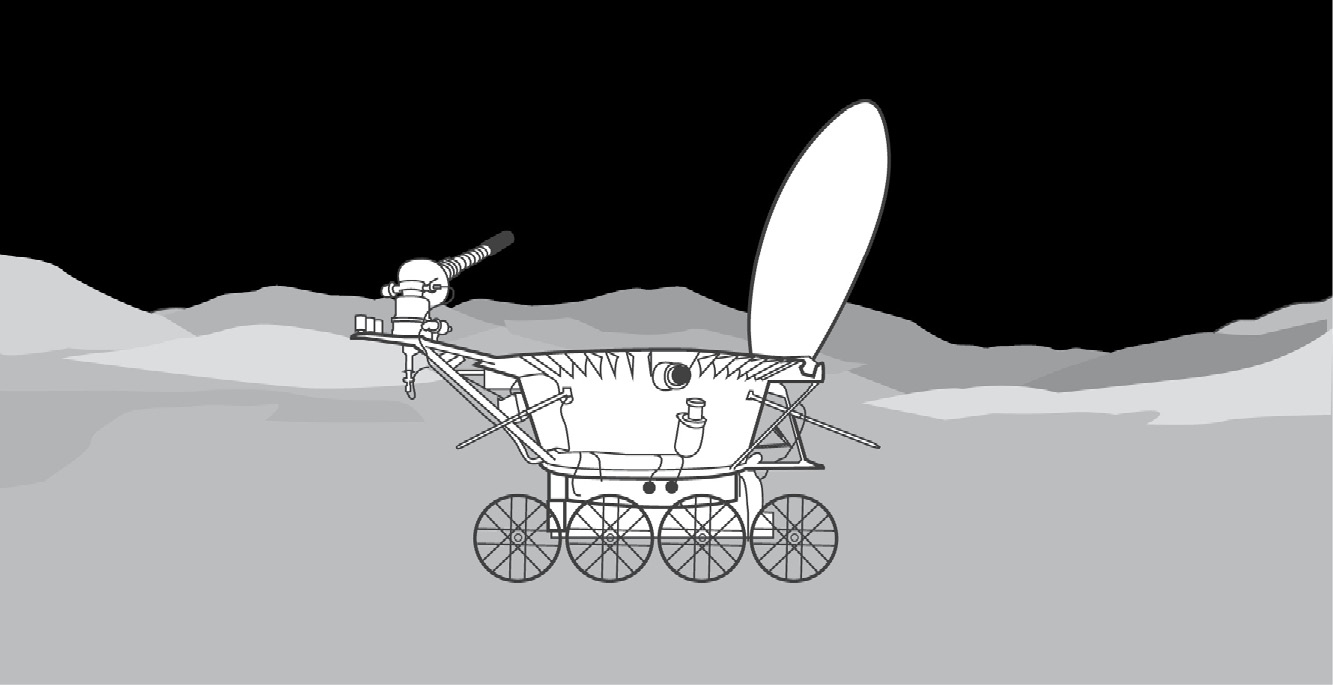17 Who Was First in Space?
When you think about traveling in space, you might picture the American space shuttles or maybe the giant Apollo rockets that went to the moon. But Russia is also a space-faring country. In fact, it was the first to get there.
More than one hundred years ago, Konstantin Tsiolkovsky, a Russian scientist and schoolteacher, came up with the idea of a rocket-powered spaceship that could carry people into space. His idea of how a rocket works is the founding principle of rocketry still used today.

Russian rockets have flown into space more often than any others and are still the most reliable way to reach space. Since the Americans retired their space shuttle fleet in 2011, they have been hitching rides on Russian rockets to get astronauts and supplies up to the International Space Station. The two countries help each other and work together. But it hasn’t always been that way…
The beginning of the Space Age was actually a space race, and it was all about rockets. The United States and Russia, then called the Soviet Union, were both in a race to build a rocket big enough to get into space.
Both countries built bigger and bigger rockets, trying to beat each other and prove who was more powerful by becoming the first country to successfully send a man-made object into orbit. Eventually, in 1957, the Russians won the race when they launched a small, shiny, spherical satellite about the size of a basketball. Sputnik became the first object other than the moon to orbit the Earth. It was our first artificial satellite and it marked the beginning of the Space Age.
Sputnik wasn’t very big, but it did prove that the Russians had rockets powerful enough to reach space. On their third launch, they sent another probe, not much larger than Sputnik, past the moon. Then, to prove their rockets were even more powerful, they sent up a dog named Laika—the first living creature to fly in space. Unfortunately, she also became the first animal to die in space because the Russians didn’t have a way to bring her capsule home. She was followed by two other dogs—Belka and Strelka—who did make it back to Earth and can now be seen stuffed in a museum in Moscow.
But there was still one more big, important step that the Russians and Americans wanted to take… and they each desperately wanted to be the first to take it. They wanted to put a human being into space.
In 1961, a young Russian pilot named Yuri Gagarin climbed to the top of a Vostok rocket and blasted into orbit. He was the first spaceman. The Russians called him a cosmonaut. He was an instant hero. The name Yuri Gagarin is now in history books around the world. Following Gagarin’s flight, Valentina Tereshkova became the first woman in space—another Russian first.

The rockets that sent Gagarin and Tereshkova into space might look simple compared to a space shuttle, but the amazing thing is that the Russians still use a similar design to fly people into space today. Sure, the rockets are bigger, but Russian rockets have not changed much since the early days because Russians believe that if you get it right the first time, you don’t mess with it.
Today’s Soyuz rockets have the same shape as their predecessors, and they still use small capsules—only now they carry three people instead of one. It is very cramped inside, with the three cosmonauts jammed in shoulder to shoulder. Fortunately, they don’t have to spend very long inside because the Soyuz is used only as a taxi to get up to the space station and back down again.
SPACE PLACES 
If you want to fly in space “Russian style,” it all starts at Star City outside Moscow. Star City is also known as the Yuri A. Gagarin Research and Test Cosmonaut Training Center. All Russian cosmonauts, including Gagarin himself, trained here. That’s where they learned to fly the Soyuz capsule, which carries cosmonauts and astronauts into space and back.
A second place is the “Cosmos” Pavilion in Moscow. This huge building contains life-size models of Russian spacecraft past, present, and future. You can step inside the Russian section of the International Space Station and see their version of a space shuttle, called Buran, which flew in space only once.
Landing in a Soyuz is still somewhat primitive. The capsule has no wings, so on reentry, it falls through the atmosphere like a meteor and then opens a parachute. Just before the capsule hits the ground, retro-rockets fire, slowing it before it thumps and lands. There isn’t much control, so if the round capsule happens to land on a hill, it rolls.

The one part of the space race that the Russians lost was the race to land a man on the moon. They did build a giant rocket called the N1 that was designed to carry two men to the moon. But unfortunately, it exploded during the four times it was launched, and the program was canceled. So American astronauts were the first to plant a flag on another world. But that didn’t mean the Russians were out of the space business.
While American astronauts were collecting rocks on one part of the moon, Russian robots were roaming on another. One of them, called Lunokhod, was the first remote-controlled car to be driven on another world. It was about the size of a bathtub.
Russian robots continued to make other firsts in space by visiting other planets. Their Venera robots are the only probes to have landed on Venus. Instead of sending people to the moon, the Russians became experts at building space stations in orbit around the Earth. They’ve built lots of them—seven successful altogether. The last and largest was called Mir.
In space, where everything is weightless and floats, the modules of the Mir space station were assembled like the branches of a tree, sticking out in many different directions and joined by hatches. It got very weird when you went from one room to another. When you floated through a door or hatch in the Mir space station, you had to change your idea of where up and down was, roll your body into that position, and go into the next room. Imagine going through a door to find that the floor and ceiling are in completely different positions from what you’d expect.


Russian cosmonauts who lived on Mir for extended periods got used to this, but astronauts from the space shuttle who came up to visit Mir for only a few days at a time found it very confusing. They had to tape red arrows on the walls inside Mir pointing the way back to the shuttle because they were getting lost in this maze. The new International Space Station has solved that problem by making sure all the modules have up and down in the same direction.
The Russians did make one attempt to build a space shuttle. They called it Buran, which means “snowstorm” in Russian. It’s no coincidence that it looked similar to the American shuttle, because the Russians copied the American design, which had already been proven to work in space.
Buran flew in space only once, on a short test flight with no people on board. That one flight was just to prove that the Russian shuttles could fly, but since then, no others have left the ground.
Today, Russians and Americans work together in space, along with other countries, such as Canada, Japan, England, France, Germany, and Italy, who all got together to build the International Space Station. And there are two control centers for the Space Station—one in Houston, Texas, and one in Moscow, Russia. Both English and Russian are spoken in space.
In the future, if humans travel to Mars, it will likely be done through a similar international effort involving many countries because the cost of going to Mars is so astronomically high. No single country would want to pay so much to visit another planet. So, instead of the competitive space race that led us to the moon, a Mars trip will be accomplished through cooperation—we’ll all get there at the same time, rather than trying to be there first and doing it alone.